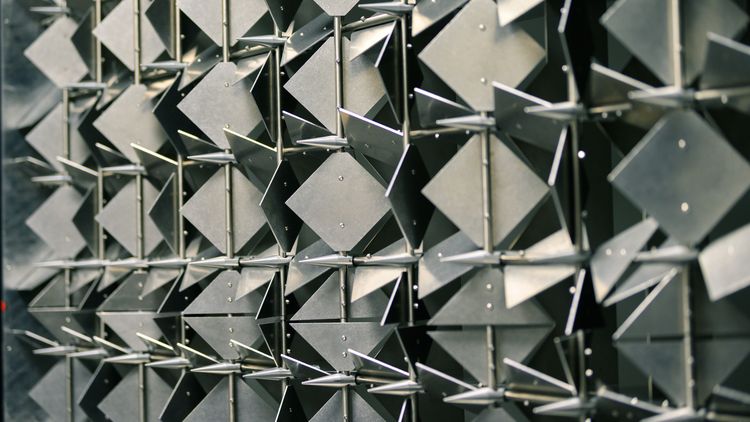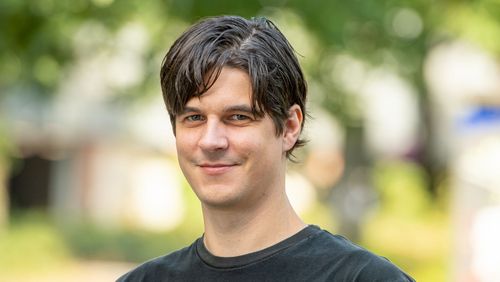The new "Offshore Megastructures" Collaborative Research Centre led by the University Hannover is researching and developing concepts for massive offshore wind turbines. In two sub-projects, Oldenburg researchers are investigating rotor designs and wind conditions at high altitudes.
Wind turbines are taking on new dimensions: the largest offshore models have rotor diameters of 220 metres and power outputs of around twelve megawatts, and according to experts, turbines more than 300 metres wide and with outputs of 20 megawatts are now technically feasible. Offshore generation of electricity offers several advantages: because the wind blows stronger, more frequently and more reliably at sea than on land, the yields are higher and there are fewer fluctuations in energy production. But the maxim here is: the longer the rotor blades, the more energy a turbine can generate.
"However, for structures of these dimensions, new concepts are needed – for both their design and operation," says Professor Martin Kühn, head of the Wind Energy Systems research group and board member of the Centre for Wind Energy Research (ForWind) at the University of Oldenburg. Giant wind turbines are the focus of the new Offshore Megastructures Collaborative Research Centre (CRC), which has been allocated approximately 8.5 million euros in funding by the German Research Foundation (DFG) and is led by the Leibniz University Hannover. The Oldenburg researchers and their large wind tunnel are participating in the CRC with two sub-projects and will receive around 800,000 euros for their research over the next four years. The goal of the Collaborative Research Centre is to develop a methodology and a simulation model – a "digital twin" – with which the current state and conditions of each individual wind turbine in a wind park can be reproduced using measurement data. "With the help of digital twins, the wind turbines of the future can be designed to operate safely, economically and in a way that conserves resources," explains Professor Raimund Rolfes from the University Hannover, spokesperson for the Collaborative Research Centre.
Professor Kühn is leading a sub-project focusing on new rotor designs that can provide a more even power input. His colleague, turbulence expert and ForWind board member Professor Joachim Peinke, is in charge of the second Oldenburg sub-project. His team is studying wind conditions at higher altitudes, about which little is known at present.
More electricity from less wind
Kühn and his colleagues are working towards the goal of wind turbines that can generate power more uniformly and effectively than current models, thus reducing the costs of grid expansion, power output control and energy storage. "On days when the wind is strong, the exchange prices for wind power tend to drop to almost zero nowadays," the engineer explains. This means that from an economic perspective, being able to increase the power supply when the wind is weak and decrease it when the wind is strong is an attractive option. "However, this characteristic contradicts elementary physical and proven technical principles," says Kühn. To solve this dilemma, the researchers plan to test concepts for wind turbines with rotor blades up to 200 metres long that can achieve high output at low and medium wind speeds and are down-regulated in strong winds.
One challenge for such extremely upsized turbines is the mechanical stress caused by high wind speeds and sudden gusts. Kühn and his team are counting on new control methods – such as improved prediction of turbulence – and innovative rotors to make the megastructures storm-proof. The researchers are investigating whether the design of the new, ultra-long and slim rotor blades can be modified so that different sections have different aerodynamic properties. "The rotor could be made more 'permeable' for strong winds or gusts, in effect reducing its surface area," Kühn explains. When the wind blows harder, the rotation speed could be reduced. And even at medium wind speeds, the rotor blades could be designed to turn away from the air flow so that their peripheral areas are subject to less stress. Kühn's team also aims to develop a new method by which wind farms can be adjusted to changing wind conditions almost on a minute to minute basis, based on laser measurements of wind conditions and forecasts.
In the initial phase, the new rotor designs will be tested using analytics and model calculations. This will be followed by experiments with a model simulation of a wind turbine in the wind tunnel, where turbulence and gusts of wind can be reproduced and adjusted as required in order to test and refine the designs.
Steadier air flows
In the second Oldenburg sub-project, the team led by Peinke and his colleague Dr Matthias Wächter will study air currents in the atmospheric layer in which the new megastructures operate. With an overall height of more than 300 metres, these structures will be taller than the Eiffel Tower. "The wind turbines are exposed to strong turbulence in their lower sections, whereas above a height of about a hundred metres the air usually flows more steadily," says Peinke, head of the Turbulence, Wind Energy and Stochastics research group. He and his team want to take a closer look at the complex boundary between the lowest layer of the atmosphere and the one directly above it. "Our objective is to model the wind fields in detail up to great heights and to understand how they affect offshore megastructures," the physicist explains.
The team will first evaluate existing data on air flows in the boundary layer. It has already been established that at heights of more than a hundred metres above the ground, turbulent flows and uniform flows, also known as laminar flows, interact in complex ways. The Oldenburg wind researchers plan to characterize these flows in greater detail and then reproduce similar flow patterns in the large wind tunnel at the ForWind centre. To do this, they are constructing an "active grid" that can generate different types of turbulence. With the grid, for the first time they will be able to create a mixture of turbulent and laminar flows in the wind tunnel's 30-metre-long test section. The resulting wind fields will then be analysed on the basis of laser measurements. At the same time, the team is developing a new mathematical turbulence model for the boundary layer, which will be incorporated into the digital twin.






